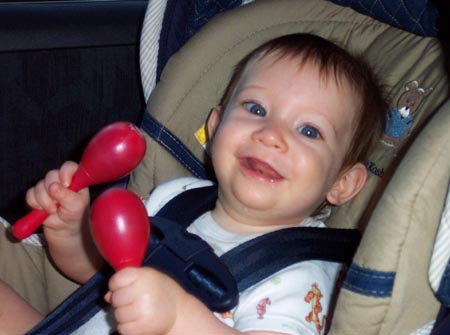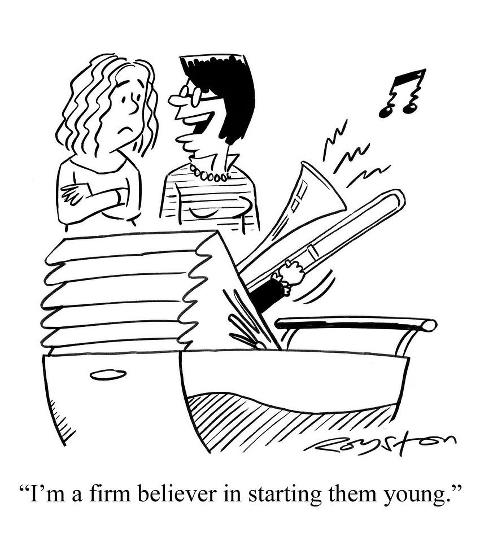Sing-Alongs for Car Trips
Sometimes, even the most verbally hesitant child will launch into his favorite song without a second thought. Music truly is a universal language, whether you’re singing “Old MacDonald Had a Farm” or picking out some elegant harp arrangements for your walk down the aisle. And because music is so highly portable, it makes an excellent tool for speech therapy sessions on the road or wherever your summer vacation takes you. Sing favorite nursery rhymes with your child on car trips. As well, check out some of our recommended singing apps for your iPad or iPhone.
Sing-Alongs for Speech Therapy
Children do not often need to be encouraged to join in a song, but if your little one is hesitant there are a few tricks you can try. Encourage your child to clap his hands or tap his feet to the rhythm while you sing. Other simple hand movements can work, as well. For example, give your child maracas and encourage him to shake them when he hears certain words in the song.
As well, encourage “silent singing,” which is when your child imagines singing a word even if he does not verbalize it. This can be particularly useful if your child can sing some or most of a song, but is hesitant to vocalize certain words or sounds. He might sing, “On that farm he had a…” for example, and then silently imagine the word “chicken.” This lends itself to later vocalization of the word he has trouble with.
How to Use Sing-Alongs for Articulation
Use sing-alongs on your car trips to work on articulation issues your child might have. For example, if he struggles with the “r” sound, encourage him to sing “The wheels on the bus go round and round… round and round.” “Old MacDonald” is another great song for articulation practice. You can substitute any animal in the song that correlates to your child’s articulation needs. For example, if your child can say “dogs” perfectly well, but struggles with the “p” sound, turn “dogs” into “puppies.”
You may need to adjust the tempo of the song to suit your child’s needs. If he’s struggling with a word, try slowing the song down a bit. Draw out each word and encourage him to copy you. If he has trouble slowing down, have him count on his fingers for multisyllabic words. For example, “puppies” is two counts. He could touch his thumb for the first syllable and his index finger for the second. This allows your child to focus on his articulation while still singing his favorite songs. During breaks at rest stops, you could spend a few minutes using Speech Buddies for articulation to help remind your child of the proper positioning of the tongue for each sound.
Song Ideas
Nursery rhymes are a great standby, but explore children’s CDs for other options. Some CDs are made specifically for children with speech disorders. Pam Marshalla is a certified speech-language pathologist (SLP) who created “Do You Like Pie?” Each song on this CD has a specific purpose. For example, the song “A Boy Named Joe” is intended for working on the “o” sound and “Baby Bobby” is intended for working on the “b” sound.
Children often enjoy spontaneously making up their own songs. Encourage this by pointing out things that you see on your car trip and making up silly verses about them. If you’re working on the colors with your child, for example, sing some lines about cars and trucks with various colors. Children are naturally attracted to repetition. When you make up your own silly songs with your child, try to repeat certain words or phrases (particularly those with sounds that your child needs to work on).






Hi Wendy,
Thanks for your comment! If you are seeing that singing can facilitate a correct /r/ sound, I would try moving to short phrases that you cue with a signing intonation. For example, you could use “rabbits eat carrots” and cue a “sing-songy” way of saying thing. Definitely tell your student that you want him to imitate exactly what you’re saying and how you say it. As his accuracy improves, you can reduce this singing cue and make your stimulus items gradually more like the intonation of regular conversation. Also, it’s ok to jump to short phrases in this case (i.e. skip the word level) since there’s some evidence that complex tasks yield better results, especially in the case where something like singing is really helping him become stimulable. I hope this helps and keep me posted!
Gordy Rogers, M.S. CCC-SLP
Co-Founder, Chief Scientific Officer
Speech Buddies
Once you establish that a student/client can produce his target sound correctly while singing, how do you generalize the skill? Do you practice speaking in a sing song voice? I just discovered that a student can produce a perfect /r/ while singing but I’m not sure where to go from there.